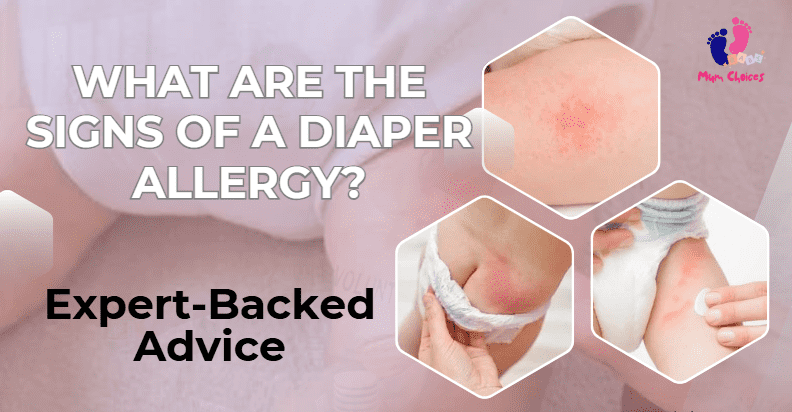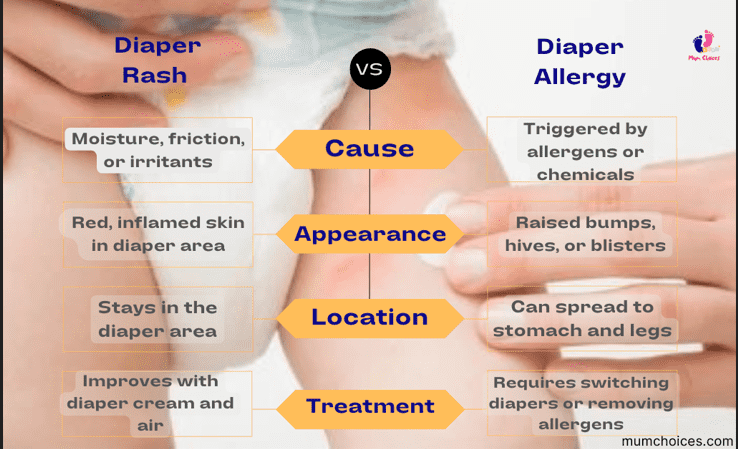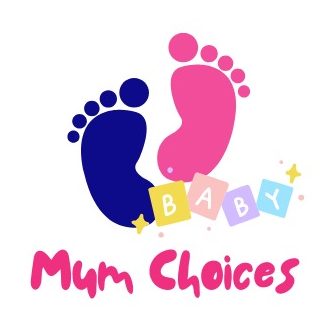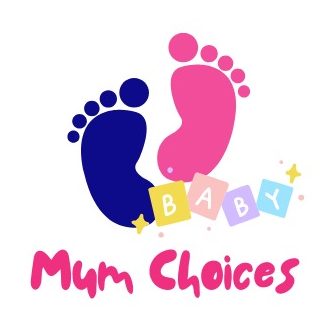I still remember the first time I saw unusual redness and irritation on my baby’s skin. At first, I thought it was just a regular diaper rash. But when it didn’t go away with the usual creams, I started to worry. Was it a diaper allergy or just a stubborn rash? That’s when I started asking myself, what are the signs of a diaper allergy?
If you’re feeling the same way, don’t worry—you’re not alone. Understanding the signs of a diaper allergy is the first step to keeping your baby happy and rash-free.
Diaper allergies can look a lot like a common rash. But there are a few signs that set them apart. Raised bumps, blistering, or rashes that get worse after every diaper change are key clues.
In this guide, I’ll walk you through the main diaper allergy symptoms. You’ll learn how to tell the difference between an allergy and a simple rash. Plus, I’ll share tips on how to manage it. Let’s dive in!
Understanding Diaper Allergies
The next sections will help you understand diaper allergies. You’ll learn what causes them and what to avoid. You’ll also find out how to spot the signs early.

What Is a Diaper Allergy?
A diaper allergy happens when a baby’s skin reacts to something in a diaper. It’s not the same as a regular rash. Instead of coming from moisture or rubbing, the rash is caused by a material or chemical in the diaper.
I learned this the hard way. My daughter had a rash that wouldn’t go away. I changed her diaper often. I used creams. Nothing worked. She was fussy and uncomfortable. Our doctor checked her skin and asked what brand we used. It turned out the scent in the diaper was causing the problem. Once we switched, her skin got better fast!
There are two main types of diaper allergies:
- Skin Allergy: The skin reacts to things like latex, glue, or fabric in the diaper. This can cause redness, swelling, and itching.
- Chemical Reaction: The baby’s skin reacts to chemicals in diapers, wipes, or creams. This can cause blisters, peeling, or worse irritation after each diaper change.
Common Causes
Here are some common triggers:
- Fragrances and dyes in disposable diapers
- Chlorine, or latex used in some diaper brands
- Certain wipes or diaper creams that have harsh chemicals
- Fabric sensitivities (for babies wearing cloth diapers)
- Bleach and Additives – Used in some disposable diapers to soak up moisture.
- Rubber and Glue – Found in diaper bands and fasteners.
- Natural Fibers Like Bamboo – Some babies react even to plant-based materials.
If your baby’s rash keeps coming back, it might be time to check the ingredients in their diapers, baby wipes, or creams.
How do I know if my baby is allergic to diapers?: Signs of a Diaper Allergy
Your baby may have a diaper allergy if they show certain signs of irritation.
Visual diaper allergy symptoms
A diaper allergy often looks different from a regular diaper rash. Some key signs to watch for include:
✔️ Rash that won’t go away – Regular rashes heal with diaper cream and air time. Allergy rashes stay or get worse.
✔️ Small bumps or hives – Allergy rashes often have tiny bumps or raised spots.
✔️ Blisters or peeling skin – Severe reactions may cause blisters, peeling, or oozing.
✔️ Rash beyond the diaper area – If redness spreads to the stomach, thighs, or back, it could be an allergy.
✔️ Rash worsens with certain diapers – If irritation increases after diaper changes or improves with a new brand, the diaper may be the cause.
✔️ Baby seems uncomfortable – Crying, fussing, or trying to remove the diaper may be signs of irritation.
I remember noticing red spots on my baby’s legs, not just in the diaper area. That’s when I knew something was different. If you see a rash spreading beyond the usual spots, it could be an allergy.
Behavioral Clues
Your baby’s actions can also give you clues. Signs include:
- Crying or getting upset during diaper changes (even before wiping).
- Not wanting to wear diapers or trying to take them off.
- Rash that stays even after using diaper creams.
If your baby’s rash doesn’t get better with regular treatments, it may not be a simple rash. Allergies last longer and can get worse if the cause isn’t removed.
What does allergy baby poop look like?
A diaper allergy can also affect your baby’s tummy. You may notice:
- Watery, messy poop with slimy mucus.
- Frequent runny poop that gets worse with diaper use.
- Signs of food issues, like stomach pain or extra gas.
Some babies who react to certain foods also react to diaper materials. If your baby has both skin rashes and tummy problems, it may help to check both diapers and foods.
Diaper Allergy vs. Diaper Rash: Key Differences
Figuring out if your baby has a diaper rash or a diaper allergy can be tricky, but knowing the difference can help you find the right fix. Here’s what to look for:
Diaper Rash:
✔️ Usually caused by wetness, rubbing, or too much time in a dirty diaper.
✔️ Looks red and irritated, but gets better with diaper-free time and a good cream.
✔️ Shows up in areas that rub the most, like the inner thighs and bottom.
Diaper Allergy:
❌ Looks more like tiny bumps, hives, or even blisters instead of just redness.
❌ Gets worse after every diaper change, especially with certain brands.
❌ Spreads beyond the diaper area, sometimes reaching the belly or legs.
I remember when my baby’s rash just wouldn’t go away, no matter how much cream I used. It turned out to be an allergy to the diaper itself! If creams aren’t helping, switching diapers might be the answer.
Diaper Rash vs. Diaper Allergy

How do you treat diaper allergy rash?
When your baby has a diaper allergy, quick action can help. Here’s what to do:
Immediate Steps
✔️ Stop using the suspected diaper brand. Try a hypoallergenic or fragrance-free option.
✔️ Switch to gentle wipes. Use WaterWipes or a soft, wet cloth instead of regular wipes.
Soothing Remedies
✔️ Give your baby an oatmeal bath. It helps calm the skin.
✔️ Apply coconut oil or petroleum jelly. These create a barrier to protect the rash.
✔️ Ask your doctor about a mild cream. Some babies may need a gentle steroid cream for swelling.
When to See a Doctor
🚨 If the rash looks infected. Watch for fever, pus, or swelling.
🚨 If the rash doesn’t improve in 72 hours. Changing diapers and using gentle diaper allergy treatments should help. If not, check with your doctor.
Catching a diaper allergy early makes a big difference! If your baby’s skin isn’t getting better, talk to a doctor for more advice.
Preventing Future Diaper Allergies
Once your baby’s skin heals, the next step is preventing another diaper allergy reaction. Here’s how:
Choosing the Right Diapers
✔️ Pick hypoallergenic diapers. Try Pampers Pure, Honest Company, or Hello Bello.
✔️ Avoid nappy with fragrances, dyes, or chlorine. These can cause allergies.
✔️ Test new diapers before using. Rub a small piece on your baby’s arm. Wait a few hours. If there’s no reaction, it’s likely safe.
The right diaper can help keep your baby’s skin rash-free!
Skin Care Tips for Sensitive Babies
Babies with sensitive skin need extra care. Here’s how to keep their skin calm and happy:
✔️ Give daily air-out time. Let your baby go diaper-free for a while each day. Fresh air helps prevent irritation.
✔️ Use fragrance-free products. Pick unscented wipes, lotions, and detergents to avoid skin reactions.
✔️ Be gentle with eczema-prone skin. If your baby has eczema, choose hypoallergenic diapers and barrier creams to protect their skin.
Taking these steps can help prevent diaper allergies and keep your baby comfortable!
FAQs: Answering Your Top Questions
Find answers to the most common questions about diaper allergies
Can diapers cause allergic reactions?
Yes, diapers can cause allergic reactions. Some babies are sensitive to chemicals, dyes, or adhesives in diapers. These can irritate their skin. This may lead to rashes or bumps.
Can babies be allergic to certain diapers?
Yes, some babies may be allergic to certain diapers. Dyes, fragrances, and adhesives in diapers can be triggers. Using hypoallergenic diapers can help reduce reactions.
Is it a diaper rash or an allergic reaction?
Diaper rash usually causes redness. It fades with treatment. An allergic reaction can cause bumps, hives, or blisters. The rash may worsen with certain diapers.
How do I test for a diaper allergy?
To test for a diaper allergy, place a small piece of the diaper on your baby’s arm. Wait a few hours to see if any irritation or reaction happens.
Are cloth diapers safer for allergies?
Cloth diapers can be safer for babies with allergies. But the detergent used matters. Choose a gentle, fragrance-free detergent to avoid irritation.
What if the rash doesn’t go away?
If the rash doesn’t go away, it could be a fungal infection or food allergy. Contact your pediatrician to get the right treatment.
Final Thoughts: What Are the Signs of a Diaper Allergy?
Trust your instincts. If something feels off, try a different product. Every baby’s skin is unique. Finding the right diaper may take some trial and error.
Look for redness, bumps, or irritation. These are common signs. If your baby reacts to a diaper, switch brands. Watch for changes and see if the reaction improves.
With patience, you’ll figure out what works best. You’re doing great! A little trial and adjustment will help keep your baby happy and rash-free.
Have a question or story to share? Drop a comment below!

